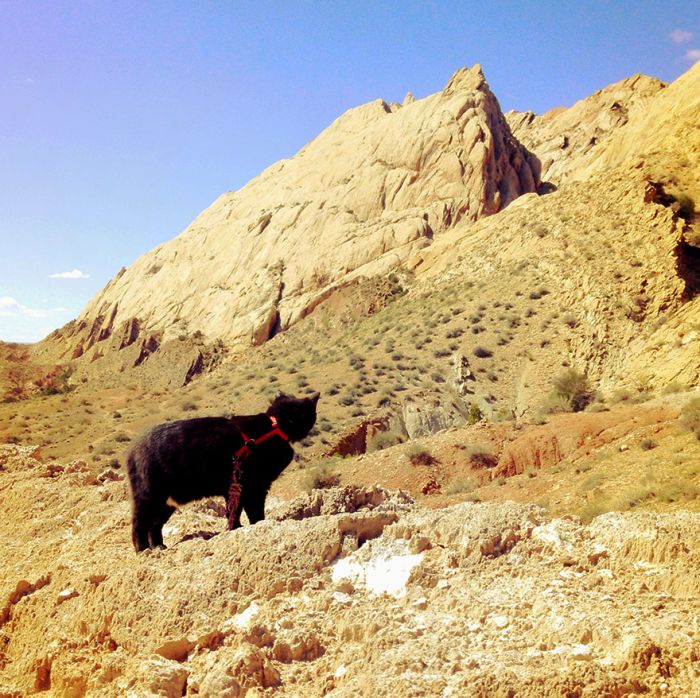|
|
Cat Climbs Mountains And Desert Treks
|
Although wildcats are solitary, the social behavior of domestic cats is much more variable and ranges from widely dispersed individuals to feral cat colonies that form around a food source, based on groups of co-operating females. Within such groups one cat is usually dominant over the others. Each cat in a colony holds a distinct territory, with sexually active males having the largest territories, which are about ten times larger than those of female cats and may overlap with several females' territories. These territories are marked by urine spraying, by rubbing objects at head height with secretions from facial glands and by defecation. Between these territories are neutral areas where cats watch and greet one another without territorial conflicts. Outside these neutral areas, territory holders usually chase away stranger cats, at first by staring, hissing, and growling, and if that does not work, by short but noisy and violent attacks. Despite some cats cohabiting in colonies, cats do not have a social survival strategy, or a pack mentality and always hunt alone.
Domestic cats use many vocalizations for communication, including purring, trilling, hissing, growling, snarling and several different forms of meowing. In contrast, feral cats are generally silent. Their types of body language, including position of ears and tail, relaxation of whole body, and kneading of paws, are all indicators of mood. The tail and ears are particularly important social signal in cats, with a raised tail acting as a friendly greeting. Tail raising also indicates the cat's position in the group's social hierarchy, with dominant individuals raising their tails less often than subordinate animals. Nose-touching is also a common greeting and may be followed by social grooming, which is solicited by one of the cats raising and tilting its head. However, some pet cats are poorly socialized. In particular older cats may show aggressiveness towards newly arrived kittens, which may include biting and scratching; this type of behavior is known as Feline Asocial Aggression.
For cats, life in proximity with humans (and other animals kept by humans) amounts to a "symbiotic social adaptation". They may express great affection towards their human companions, especially if they imprint on them at a very young age and are treated with consistent affection. It has been suggested that, ethologically, the human keeper of a cat functions as a sort of surrogate for the cat's mother, and that adult domestic cats live their lives in a kind of extended kittenhood, a form of behavioral neoteny. Conversely, the high-pitched purrs cats make to solicit food may mimic the cries of a hungry human infant, making them particularly hard for humans to ignore.
|
|









